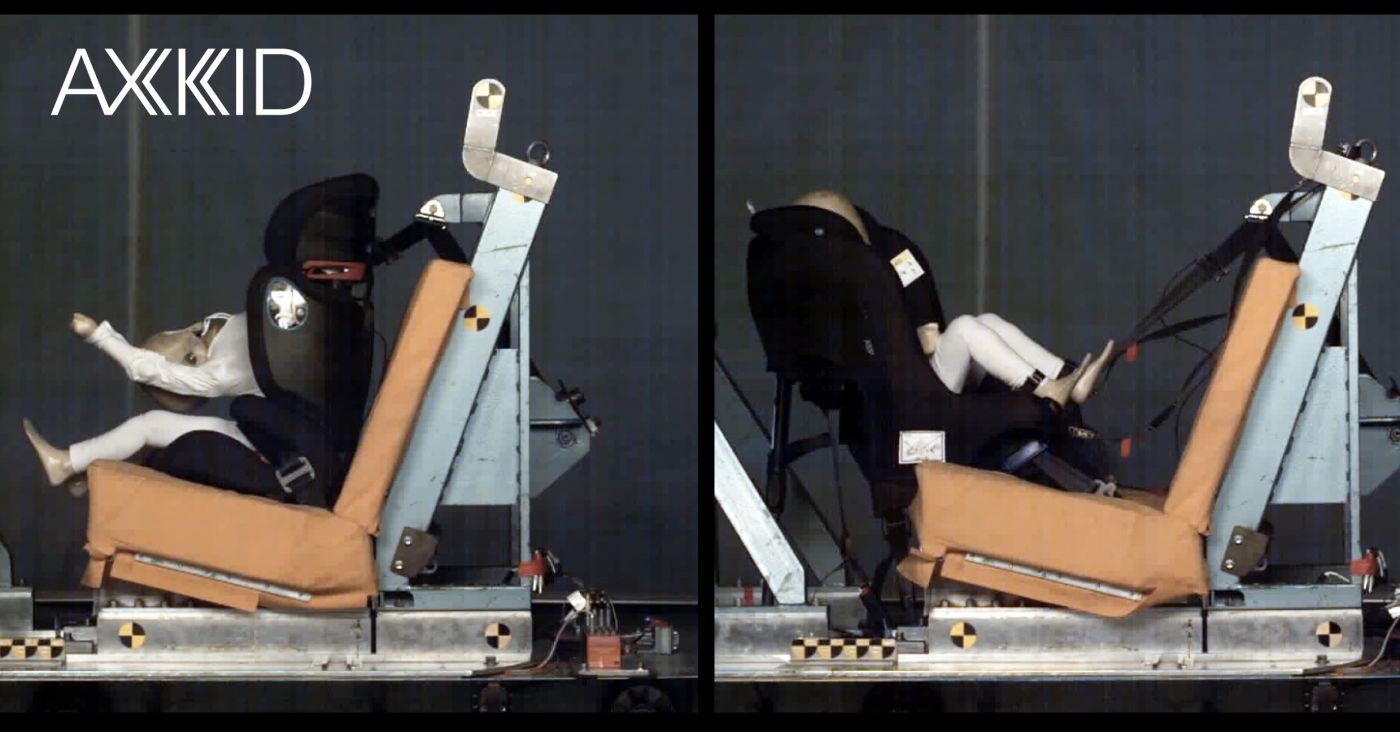Plus Tested car seats ensure that your child is not exposed to life-threatening high-headed forces during a frontal collision. Sweden is the world leader when it comes to child safety by car and it is therefore not surprising that Plus Test is a Swedish approval.
Tommy Pettersson, Head of the Crash Lab at VTI in Linköping, mainly created the approval 2009, and compare it to other tests in the EU, the Plus Certification ensures that the car seat protects the child from high forces against the neck. Plus Test is a supplementary test by VTI, the National Road and Transport Research Institute, on car seats intended for the European market. Plus Tested car seats can be approved in two versions, max 18 kg for ISOFIX or max 25 kg for car seats with belt attachment.

What many do not know is that this approval is extremely tough and many car seats end up in ruins during the test. It is mainly three factors that make the Plus Test extremely hard to pass:
1. Higher speed.
The speed is higher than normal compared to the speed used by our European approvals ECE R44 and UN- ECE R129, also called “i-Size”.
2. Very short braking distance.
The short braking distance makes the impact on the car seat brutal, the shorter the braking distance, the more violent the forces become.
3. Measure the forces in the crash test dummy’s neck with sensors.
To make the Plus Test even more difficult, you not only use higher speed and shorter braking distance but also carefully measure the forces in crash test dummy’s neck with sensors. Which means that forward-facing car seats will not have any chance to pass the test because the neck forces are too high.
A Plus Tested car seat ensures that your child is not exposed to life-threatening high neck forces in a frontal collision. Unlike the usual approval, the Plus Test is a voluntary test and it is up to the manufacturer to Plus Test the car seats or not. Axkid today has three Plus Tested car seats in the assortment: Axkid Minikid, Axkid Move, Axkid Rekid ISOFIX.

As a parent, you have read with certainty that the car seat as you choose should also be Europe-approved and E-marked according to the ECE regulations. What does not seem as clear is what it means or how the tests were made. Of course, it is of the utmost importance that the car seat that you choose to buy for your child is EU-approved, but tests carried out by the ECE regulations do not take into account the forces in the neck. It is therefore important to ensure that your car seat is also Plus Tested.
All car seats approved according to ECE R44 are crash tested, but what many do not know is that a rear-facing car seat is tested both in a front and rear impact. This means that the rear-facing car seat must be able to withstand both a frontal and rear impact to be approved. This is unlike the forward-facing car seats that are only required to be tested in front impact to meet the approval.




